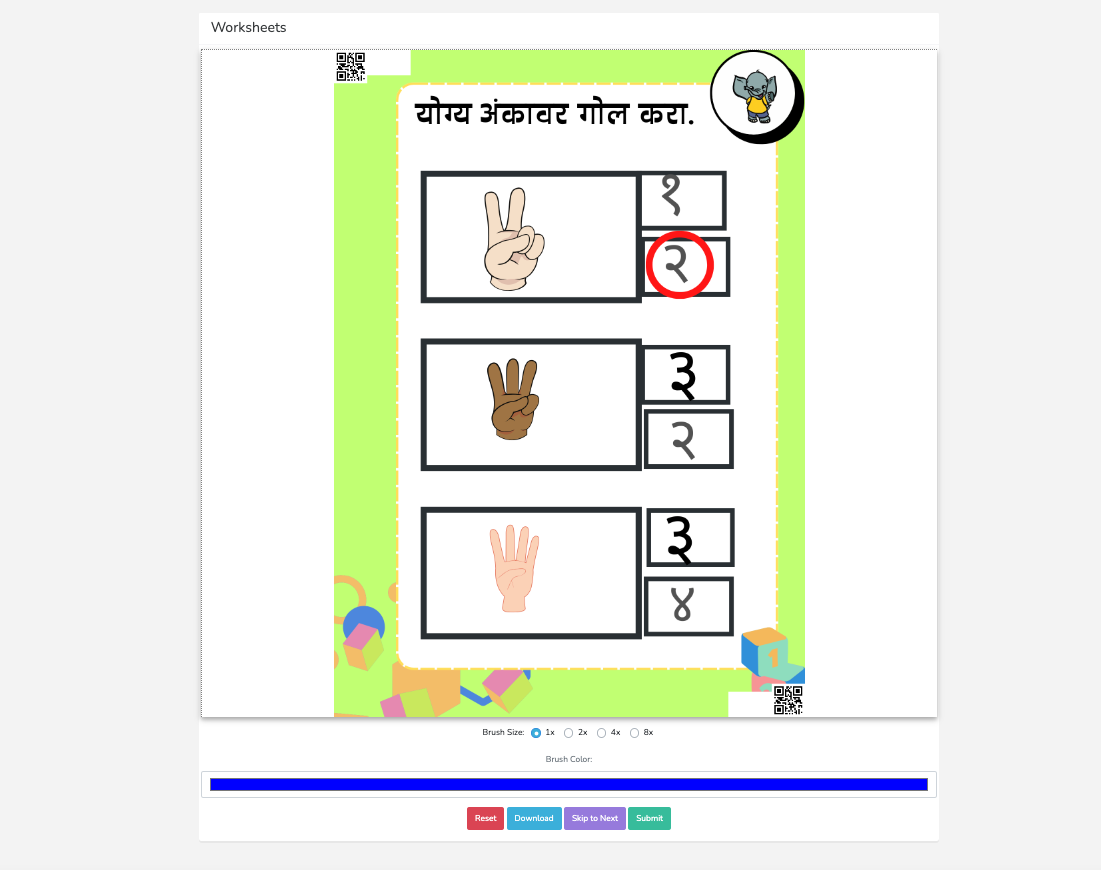Lessons From An AI Grading Tool Already Assessing Millions of Students
In India, a nonprofit is using a simple AI grading tool to provide feedback to more than 50,000 students per day, providing potential lessons about scalability and accuracy standards in AI grading.

Correcting student work with AI is often a hypothetical discussion in the U.S., but in India, Rocket Learning, a New Delhi-based edtech and childhood nonprofit, is providing instant feedback on 50,000 worksheets per day. This helps to offer guidance for some three million learners under age six who might not otherwise receive it.
The AI grading tool provides feedback to students on digital homework — for instance, in one exercise, students are given a worksheet with illustrations of several hands holding up varying amounts of fingers. They are asked to circle every hand that is holding up two fingers, using a digital sketching tool. The AI tool then corrects the work, letting them know the options they missed.
The assessment tool is part of the comprehensive early childhood learning program Rocket Learning runs in partnership with more than 200,000 daycares in 10 Indian states that pairs teachers with small groups of parents who connect through online communities. The program’s goal is to help parents teach their children early learning competencies.
The AI grading tool was developed with the help of a $1.5 million Google.org grant, and as part of that, Google experts are helping Rocket Learning develop an AI tutor for the program that utilizes machine learning. In the meantime, there are many lessons for educators from the AI grading tool already deployed, says Vishal Sunil, CTO and co-founder at Rocket Learning.
AI Grading: Perfect Accuracy Isn’t Necessarily Needed
In some ways, a philosophy behind Rocket Learning’s grading tool is not to let the perfect be the enemy of the good. The tool’s accuracy ranges from about 90% to 95% depending on the type of problem.
“It’s not a big deal if it gets it wrong,” Sunil says. This is because informing the user that wrong answers can occur is part of the experience. In fact, wrong answers can even foster more interactions between students and human educators. Sunil says users are told, “Hey, if you got it wrong, ask your teacher about it," or "Call this number."
"That's also an engagement tool in some ways,” he adds.
Tools and ideas to transform education. Sign up below.
A Way To Respond To More Students
Deploying the AI grading tool has increased the amount of feedback students are receiving dramatically. Previously, less than 5% of worksheets were graded, Sunil says. Now with the help of the tool, all work is responded to instantly.
This not only helps students learn in real-time, Sunil says, but it has led to increased utilization of the platform and more interaction between families working with Rocket Learning. This tool is deployed alongside a suite of tools that provide personalized problems for students and incorporate gamification.
“It’s a high engagement, low-stress way to engage and assess where a child is,” Sunil says.
Accessing This AI Tool and Better Harnessing AI’s Potential In The Future
Rocket Learning’s AI worksheet grading tool is open source, and the nonprofit hopes to make exercises available in English and other languages in the future.
Overall, Sunil believes AI technology, particularly generative AI, has a lot of potential to help low-income students, and students in general. But to live up to its full potential, he believes the education field needs to be proactive rather than reactive.
“Edtech has been very, very shy about using generative AI — it's been more like it's been affected by it, it's not been designed by us,” he says. “The whole education landscape has been revolutionized by it.” However, this revolution has been unintentional and largely outside of educators' control.
Sunil believes that with the right design, edtech can start leading this revolution rather than living through it. “It is possible to guard rail and to create these generative experiences using LLMs that could save a lot of human time and effort,” he says.
Erik Ofgang is a Tech & Learning contributor. A journalist, author and educator, his work has appeared in The New York Times, the Washington Post, the Smithsonian, The Atlantic, and Associated Press. He currently teaches at Western Connecticut State University’s MFA program. While a staff writer at Connecticut Magazine he won a Society of Professional Journalism Award for his education reporting. He is interested in how humans learn and how technology can make that more effective.

